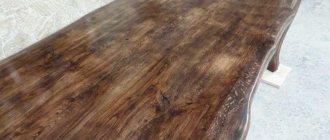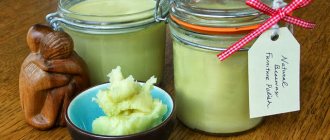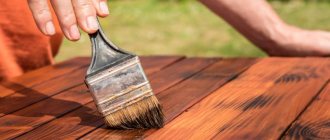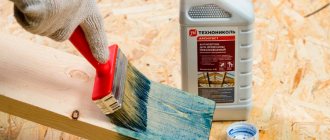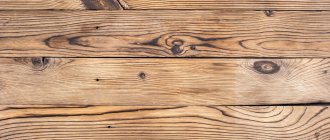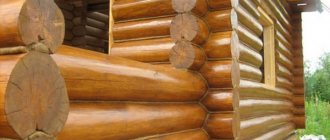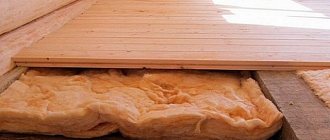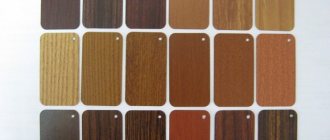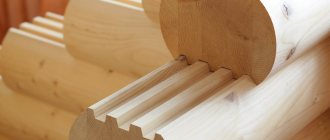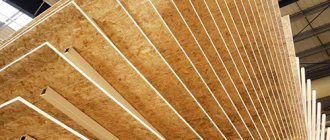Wood has been used by humans for a long time for the construction and decoration of houses, the manufacture of furniture and interior items. This material remains popular today due to its environmental friendliness and decorative qualities. However, wood products require protection from external damage, minor scratches, moisture, and dirt. To protect wood and to emphasize the texture and beauty of natural patterns, various coatings are used.
Among the possible wood processing options, waxing has the advantage of being an environmentally friendly method that uses natural products. Thus, many wooden products coated with wax can be safely used even in children's rooms. The advantage of wax over varnish is not only its naturalness, but also that, while covering and protecting the surface, it does not clog the pores of the wood, and the wood breathes. Unlike varnishes, which create a film. At the same time, the appearance only benefits, the water-repellent properties of the wax are good, and the coating is durable.
Scope of application of liquid wax
Depending on the consistency and composition, wax is divided into liquid, solid and water. Each type of wax has its own area of application. Thus, liquid wax is especially convenient when it is necessary to treat a surface with a complex relief shape. For example, furniture richly decorated with carved elements. Hard wax is applied with a piece of soft cloth, and in this case it will not work. Liquid wax is applied with a brush, easily spreads over the surface of any shape, and is used to cover the most complex and delicate decorative elements. It is possible to play with the color saturation depending on how many layers of liquid wax are applied. There are options to make the surface shiny or matte. As a rule, liquid wax for wood contains beeswax and a natural solvent – turpentine.
Wax mastics
Mastics are made on the basis of natural wax, often containing turpentine, drying oil, rosin, and stearin. Working with mastic will require special experience and skill - processing large areas is quite difficult. In addition, when heated and absorbed into wood, product consumption increases.
Features of application: This mastic must be preheated so that it penetrates more deeply into the structure. After treatment, the surface must be polished.
Making liquid wax at home
This wax can be prepared at home. To do this, you will need beeswax and turpentine in a 1:2 ratio to obtain a liquid product. The wax is crushed and melted in a steam bath or in a microwave oven. Then carefully and constantly stirring, pour in turpentine. If the mixture turns out to be too liquid, the procedure is repeated, heating the solution and adding more crushed wax. Sometimes a small amount of "carnauba wax" is added. It is not a bee product, but a hard tree resin extracted from palm leaves in Brazil. Thanks to carnauba wax, the coating becomes stronger. Depending on what kind of wax is used, a waxing composition of different shades is obtained. So, to preserve the natural light color of the wood, it is recommended to coat it with a composition based on bleached wax. Other options give rich honey tones. When working with turpentine, you should follow safety precautions and ventilate the room well. Liquid wax based on linseed oil. Cooking at home. Vegetable oils can be used as solvents instead of turpentine. Thus, the result is an absolutely safe product with a pleasant smell, which can even be used to coat children’s furniture or wooden toys. To prepare this product at home, take natural beeswax and linseed oil in a ratio of 1:4. Flaxseed oil should be boiled first. Sometimes it is replaced with olive oil. But flaxseed is absorbed much better, so it is preferable to use it. Beeswax is crushed and combined with vegetable oil in a glass container. Then it is heated in a water bath. You can use the microwave. The finished mixture can be stored for a year without losing its properties. Store in a closed container in a cool place, avoid exposure to direct sunlight.
How to choose
The main criterion in choosing a building material depends on what kind of work is being done: external or internal. Based on this, it is already worth choosing between specific types of wax.
If it is necessary to carry out interior work, namely to restore wooden furniture, walls, doors or flooring, then it is important to comply with several conditions - prevent sunlight from penetrating the treated surface and monitor the temperature regime. Sudden changes can negatively affect the work done.
As mentioned earlier, the hard type of wax is suitable for deep cracks, which is applied in several layers. For restoration of a slightly damaged surface, liquid is suitable.
Usually the packaging contains a detailed description of what application the wax is intended for. The composition of the building material for interior work is environmentally friendly, thereby not harming the health of people living in the house.
There are also small wax sticks on sale that can help with minor damage to furniture or floors.
For outdoor repairs, you must purchase a product that states it is for outdoor use. It contains various oils and other components that protect against moisture, sun, fungi and mold. They also help preserve the color of the wood for 5 years.
The cost of different waxes also differs and ranges from 100 to 2000 rubles. It depends on the volume, for external or internal work, as well as the manufacturer.
As for brands, their choice should also be taken responsibly. If the user is more inclined to products from a foreign manufacturer, then it is worth paying attention to Borma Wachs. It has been producing wood protection materials since 1928. In addition to wax, you can purchase oils and varnishes from this company. Products are provided for both interior and exterior use, using environmentally friendly materials. At the same time, the price of the goods is quite reasonable.
The Finnish manufacturer Tikkurila has a wide range of products: paints, putties, primers, varnishes and other building materials. The market has been providing goods since 1862. The price of goods is low and average.
The German company Biofa produces products for both home and professional use. This company has a large selection of building materials, but their prices are also high.
A well-proven domestic manufacturer is Sigma Color. In a relatively short period of operation (since 2003), the company has achieved certain results. For them, an important factor in production is also the choice of environmentally friendly products for creating oils and waxes.
Another Russian manufacturer is Master City. High-quality products and a wide range at a very affordable price.
These are the main recommendations that you should pay attention to before purchasing wood wax to avoid mistakes when choosing.
Industrial liquid wax
Substances that accelerate the drying process are usually added to industrially produced liquid wax - driers, rosin esters to enhance adhesion, and various others to improve the elasticity and wear resistance of the coating. Therefore, it is sometimes more convenient to use, and the waxing process takes less time. Liquid industrial wax is also tinted. After applying tinted wax, surfaces of different color shades are obtained. From brown and bronze to mahogany and ebony - there is something for every taste. Experienced craftsmen can prepare a coating composition at home that is ideal in consistency on the first try; beginners will have to experiment. Therefore, ready-made industrial molds are more convenient for beginners.
Pros and cons of wax protection for wood
Among the many advantages of waxing wooden products, the main ones can be mentioned, such as moisture resistance, reliable protection against microbes and fungal infections.
- Regardless of the components of the wax composition, the strength of the products increases, and they better withstand the effects of many adverse environmental factors.
- Preparations based on natural substances are safe to apply to wooden surfaces at home and in factories.
- Wax-coated objects retain the natural warmth of the material and make the tactile sensations more pleasant.
Waxing the surface is one of the most attractive ways to transform a wooden product into a beautiful and unique piece with a shiny surface.
Among the undeniable advantages there are also disadvantages, for example, almost all wax solutions are sensitive to alcohol-containing preparations.
Strong alcoholic drinks can leave unsightly stains on perfectly smooth wooden surfaces. Wax also changes color when exposed to hot objects.
Applying liquid wax
It is more convenient to apply liquid wax to a product with a hard brush, especially when it comes to embossed decorative elements. Before the first use, a new brush must be cleaned - remove excess hairs that are poorly attached and will immediately end up on the surface, which will not decorate the coating. The most suitable brushes are made from natural bristles; brushes for oil painting are suitable. There are also special brushes for liquid wax on the market. They are distinguished from ordinary brushes by the bristled bristles at the ends. On a new wooden product, homemade liquid wax is applied in one layer. After which the wooden surface is left for at least 1 hour. After the composition has been absorbed, its excess is removed with a piece of clean cloth. Otherwise, greasy stains may remain on the surface. Any non-lint soft fabric, even a waffle towel, is suitable for these purposes. The result is a beautiful, noble matte surface, the texture of natural wood becomes apparent. If desired, you can apply another layer of wax, and then polish the product using a cloth or a roll of thin metal wire. In this case, the surface will acquire a characteristic shine. For the second layer you need very little composition, since the main part has already been absorbed into the pores of the wood.
Manufacturers' choice
The quality of the restoration largely depends on the brand of wax material. Today, reviews on online sites and reviews help you understand offers from manufacturers. Company names:
- France, trademark "Liberon" and "V33". Wax putty for wood Liberon, restores damage to waxed or varnished wood and furniture.
- Italy, Borma Wachs. Various types are available. With their help, any problem can be solved. Easy to use at home. A line of wood gilding has been developed. For example, Beeswax gold/silver Holzwachs.
- Russia, NPF "VAPA" and "Homa". The first company offers analogues of the best imported samples in terms of their consumer characteristics. The second one was developed - Homastic Wood Wax, frost-resistant.
Surface preparation before applying liquid wax
If the wooden product is not new, but we are talking about restoration, for example, then the surface must be carefully prepared before applying liquid wax. First, remove the old varnish or polish. A solvent is used for this. A single treatment will not be enough; the procedure is repeated several times until the old varnish is completely removed. The residues are carefully washed off with warm water, and the most solvent-resistant areas are rubbed with sandpaper. After this, the wood is rubbed with a stiff brush in order to remove the old coating even from the pores and grooves. After drying, the products proceed to the final stage of preparation. Sand the wood with a sharp carpenter's knife - a scraper or sandpaper. All manipulations are carried out strictly in the direction of the wood fibers. Moreover, there should be no protruding fibers left - everything is cut off and sanded. The result should be a perfectly smooth matte surface, now the wood is ready to be treated with liquid wax. The further application procedure is the same as in the case of a new surface - cloth or brush, in one or two layers, in the direction of the grain.
How to properly use wax oil to impregnate wood
- The surface to be treated must be dry, free of dirt and dust (humidity must be at least 20%, wet wood does not absorb oil and dries slowly in a humid environment).
- Before use, the oil must be thoroughly mixed and constantly doing this during the application process.
- To prevent working seams from working, impregnation is applied from edge to edge.
- If the wood is porous, it is better to apply two layers (waiting until the first layer dries).
- After application, remove unabsorbed oil residues from the surface.
- If the wood is constantly exposed to atmospheric influences, then oil wax must be applied every year.
Application of industrial liquid wax
Ready-made industrial forms of liquid wax are applied in accordance with the instructions on the packaging. Manufacturers include various substances that affect drying speed. There are products that, after applying the first layer, are not recommended to be left on the surface for more than 10 minutes, after which they should be immediately wiped with a cloth to remove excess coating. Some compounds take longer to be absorbed. Some manufacturers offer liquid wax in spray form. Its composition does not differ from its analogues applied with a brush, but is available in the form of a bottle with a sprayer. Just shake the can and apply the composition to the surface from a distance of 25 cm. After a while, wipe with a piece of soft cloth, evenly distributing the coating. After drying, the product can be polished to a shine if desired. Liquid wax in the form of a spray is produced both colorless and tinted. In any case, it is always worth doing a test painting of a small area before starting to treat the entire surface of the product. According to safety precautions, all materials soaked with liquid wax during work, such as rags and sponges, should be thrown away or stored in airtight containers. It does not spontaneously combust, but is flammable. The room should be ventilated during and after work.
Waxes with oils
To provide the tree with the most reliable protection, it is impregnated with oil before applying wax. Professional formulations can significantly simplify the processing process.
For example, products from OSMO contain oils and waxes, so they retain all the properties of a natural product:
- Penetrates well into the wood structure and provides deep protection;
- Even after damage to the protective layer, moisture penetration inside is limited;
- Preserves the elasticity of wood and reduces the risk of drying out;
- Prevents the development of mold and pathogens;
- Protect the tree from waterlogging.
In addition to vegetable oils and waxes, the composition includes water-repellent additives. Processing allows you to enhance the natural color of wood or give it a light shade with the addition of pigments.
Features of the use of waxed products
With all the advantages of the method of treating wood with liquid wax, it should be remembered that wax is a material sensitive to high temperatures. Under their influence he “floats”. Therefore, you need to take into account the features of the room in which future furniture or wood products will be used. Although the heat resistance of some modern industrial samples of liquid wax reaches 100 0C. However, you should not wax your kitchen work surfaces. If you accidentally spill hot food or place heated dishes, traces will remain. Which can only be removed by repeated waxing.
Wax is not compatible with products containing alcohol. When choosing a care product for waxed furniture, you should carefully read the composition and instructions. In general, it is enough to simply wipe it with a dry soft cloth, and to remove dirt or remove fingerprints from time to time use special cleaners with the obligatory mark “for waxed surfaces.”
Subject to application technology and proper care, coating wood products with liquid wax will ensure a long service life and a noble appearance.
Benefits of wax formulations
Wax is used in a variety of areas: industry, medicine, cosmetology, household. The main advantage of the natural composition of wax products is its complete safety. It does not contain toxic impurities, so it can be used in any room, including a children's room.
Advantages of waxing wood:
- Strengthening wood fibers;
- Improving the appearance of products;
- Fire resistance – wax is not subject to combustion and does not emit hazardous substances, but at high temperatures the surface treated with wax may become deformed;
- Moisture resistance - effectively repels steam and water droplets, preventing wood from getting wet and the development of mold and mildew.
Thanks to its natural chemical composition, wax is not subject to oxidation, therefore it retains its protective properties for a long time. After treatment with wax, the wood does not change color for many years.
Treating wood with wax creates a hard, yet thin, breathable coating that increases resistance to wear, simplifies maintenance, and prevents rot.
Wax products allow you to give wood shine and pleasant smoothness, highlight its beautiful texture, and make the natural pattern more contrasting.
Application area
Wax paints can be used for exterior and interior applications.
Most often they are painted:
- facades of wooden buildings;
- gazebos;
- pergolas;
- wooden fences;
- outdoor sculptures and decorative elements made of wood.
Paints are needed when it is necessary to emphasize the texture of wood, impart a lasting shine, and protect surfaces from moisture, temperature changes, fungus and bacteria. Wax prevents drying out, cracking, and discoloration of wood.
Wax paints are indispensable when restoring furniture: they can update it or give it a trendy vintage effect. Wax compounds are suitable for painting interior wood panels, stair railings, and floors.
Kinds
There are different formulation options available for sale:
Hard wax
Liquid oil-wax (colorless or tinted)
Water-based wax paint
- Hard waxes are ideal for treating furniture, especially antique ones. It is more difficult to work with them; preheating to the desired temperature is necessary.
- Oil-wax compositions are recommended for exterior work, covering wooden ceilings, floors, and panels. They dry quickly and protect surfaces well from moisture.
- Water-soluble paints with the addition of wax are absolutely safe, non-toxic, and easy to apply. They can be used for interior work, including in children's rooms. Painted surfaces are easy to clean.
Primary raw materials
Before wondering how to dissolve the wax to a liquid state, you need to think about what to use as the primary raw material. These can be wax trimmings that are collected after trimming honeycombs in apiaries. The honeycombs themselves are also used, which are already full and difficult to clean.
By cleaning, you can get about 70 percent of the wax from the total mass on the comb. It is used for melting both the bar and the waxy material from the honeycomb that remains on the surface after eating honey.
Advantages and disadvantages of the product used
Waxing has both pros and cons. The first list looks like this:
- emergence of resistance to high humidity;
- protection against pathogenic microbes and fungi;
- improvement of tactile sensations;
- giving the product an attractive appearance;
- creating a shiny coating;
- increase in strength indicator;
- improving resistance to external negative influences;
- restoration of the original appearance of structures;
- Possibility of use in domestic conditions and at work;
- the ability to preserve natural heat.
There are few negative points, but they are worth paying attention to:
- afraid of compounds containing alcohol;
- melts easily;
- the appearance of stains when strong drinks come into contact with the material.
Which company is better to purchase products, everyone chooses for himself. However, it is not enough to choose a good product. It needs to be applied correctly. Waxing is considered a reliable and inexpensive surface protection. Suitable for any type of wood. There is nothing complicated about manipulation. Even a beginner can master the job if he has the following devices at hand:
- hard brush;
- diluent;
- wax;
- knife;
- sandpaper;
- brush;
- a piece of soft material.
The application process is as follows:
- Removing the surface from the old coating. A solvent is used for this. At the end of the procedure, its remnants are washed off with warm water. If there are large pieces of old paintwork, you need to use a carpenter's knife. The next stage is sanding. The cracks are also thoroughly cleaned. A stiff brush will be an indispensable assistant for manipulation. The result is a flat and smooth surface. You can proceed directly to waxing.
- The substance is applied only to a clean and dry substrate. Using a soft cloth, the entire surface is treated, after which the cracks, corners and other hard-to-reach areas are thoroughly impregnated. A brush is also suitable for manipulation. The direction of movement is along the fibers.
- At the end of the action, you need to give a certain time to dry. The wax must be completely absorbed, regardless of the material being processed. Residues are removed with a soft and dry cloth. It is necessary to control the application of impregnation to all hard-to-reach areas. This will help make wooden items durable, strong and attractive. To obtain the perfect shine, the composition must be applied several times.
